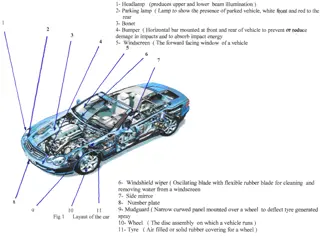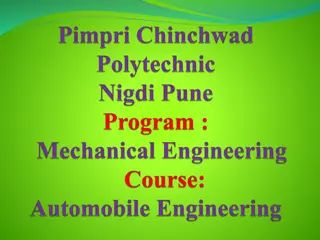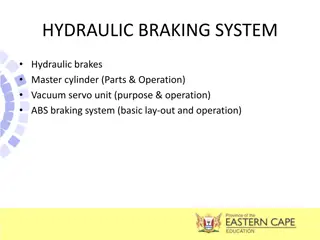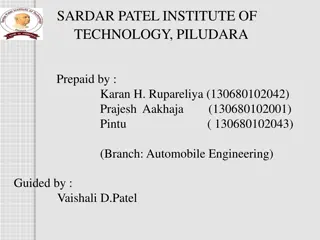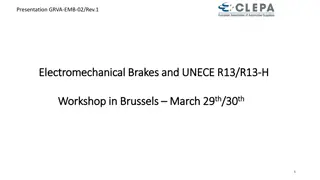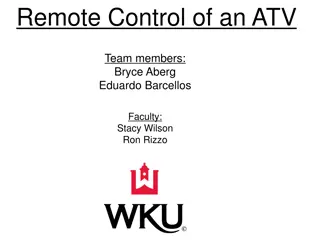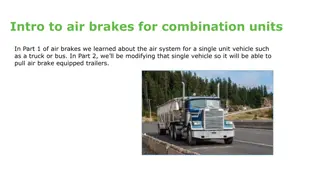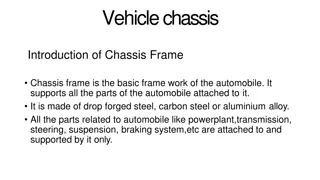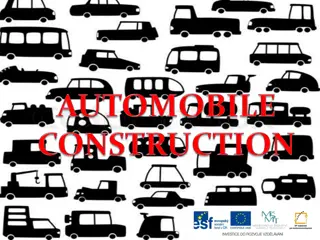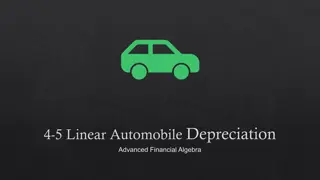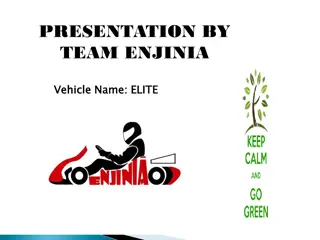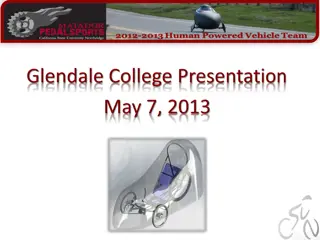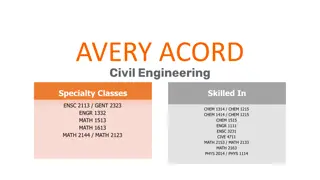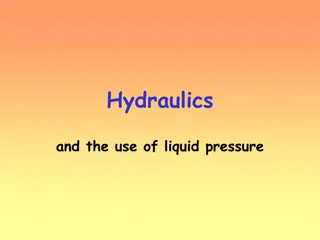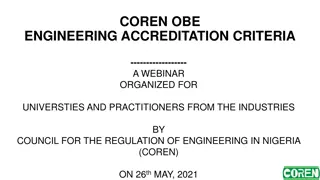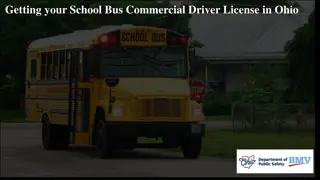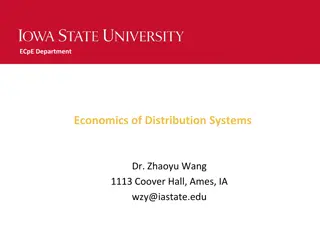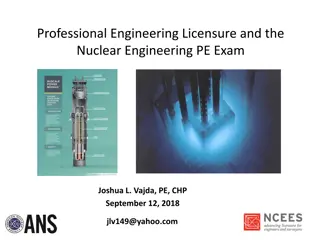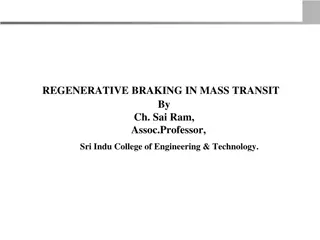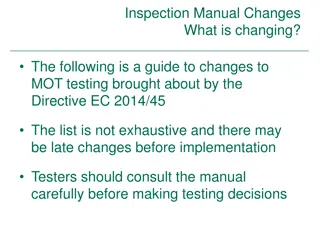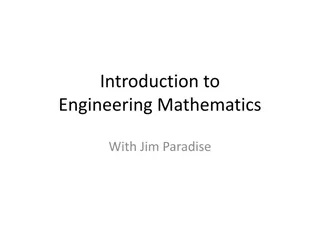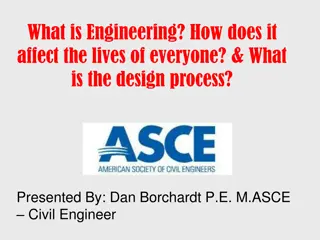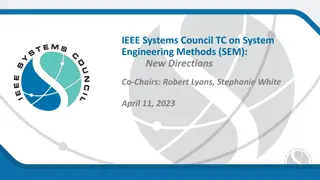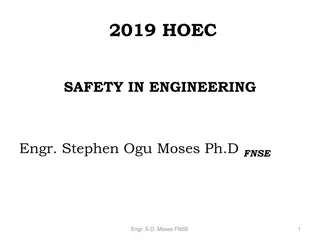Understanding Clutches and Brakes in Automobile Engineering
Explore the essential components of clutches and brakes in automobile systems, including types, construction, and purpose. Learn about the role of clutches in disengaging the engine from transmission for gear shifting and braking, and discover various types of clutches like pneumatic, hydraulic, mechanical, and electromagnetic. Dive into the construction details of clutches, such as clutch disks and pressure plates, to understand their functions within the transmission system.
Download Presentation

Please find below an Image/Link to download the presentation.
The content on the website is provided AS IS for your information and personal use only. It may not be sold, licensed, or shared on other websites without obtaining consent from the author. Download presentation by click this link. If you encounter any issues during the download, it is possible that the publisher has removed the file from their server.
E N D
Presentation Transcript
BRANCH- AUTOMOBILE SUBJECT - EME Group members Enrollment no. Anand Shahani Shahnavaz Ghanchi Karan Rupareliya Atishresth Rathode Vikas Singh Mahesh Patel 130680102044 130680102008 130680102042 130680102041 130680102046 130680102027 Guided by:- Mr. R N.Patel
TOPICS CLUTCH Purpose of Clutch Types of Clutches Contruction of clutch BRAKES Introduction Types of Brakes
Clutches 3
Purpose of the Clutch Allows engine to be disengaged from transmission for shifting gears and coming to a stop Allows smooth engagement of engine to transmission 4
Clutches Location of the Clutch:- It is located at middle of the two shaft i.e., the transmission and engine of the car. 5
Types of the Clutches:- Clutches Pneumatic Hydraulic Mechanical Electromagnetic Friction clutches Positive contact clutches Toothed Clutch Jaw Clutch Disc Clutch Centrifugal Clutch Cone Clutch 6
Construction of the Clutch 7
Clutches Splines to input shaft Of transmission 44-3 Construction of the Clutch Clutch Disk or Friction Disk 8
Clutches Pilot bushing or bearing in center of flywheel or crankshaft, supports the end of input shaft (friction disk) splined to transmission Input shaft (throw-out bearing T/O bearing) allows to push on rotating clutch fingers Bolted to Crank Bolted to flywheel - Applies the spring force to clamp the friction disk to the flywheel (clutch fork) pushes T/O bearing to release rotating clutch 9
Pressure Plate Releases friction disk from flywheel Moves pressure Plate right Pivots T/O bearing 10
Clutch terms Clutch disengaged Clutch pedal is in or down Clutch engaged Clutch pedal is out or up What would it mean if someone said the clutch pedal Is engaged? Make sure you know if you are talking about the clutch or the clutch pedal !!! 11
Clutches 12
CONE CLUTCH As the name implies, a cone clutch has conical friction surfaces. The cone's taper means that a given amount of movement of the actuator makes the surfaces approach (or recede) much more slowly than in a disc clutch. As well, a given amount of actuating force creates more pressure on the mating surfaces. The best known example of a cone clutch is a synchronizer ring in a manual transmission. The synchronizer ring is responsible for "synchronizing" the speeds of the shift hub and the gear wheel to ensure a smooth gear change.
CENTRIFUGAL CLUTCH A centrifugal clutch is used in some vehicles and also in other applications where the speed of the engine defines the state of the clutch, for example, in a chainsaw. This clutch system employs centrifugal force to automatically engage the clutch when the engine rpm rises above a threshold and to automatically disengage the clutch when the engine rpm falls low enough. The system involves a clutch shoe or shoes attached to the driven shaft, rotating inside a clutch bell attached to the output shaft. The shoe(s) are held inwards by springs until centrifugal force overcomes the spring tension and the shoe(s) make contact with the bell, driving the output. In the case of a chainsaw this allows the chain to remain stationary whilst the engine is idling; once the throttle is pressed and the engine speed rises, the centrifugal clutch engages and the cutting chain moves.
BRAKES BRAKES
Introduction A brake is a mechanical device which inhibits motion. Brakes are generally applied to rotating axles or wheels, but may also take other forms such as the surface of a moving fluid (flaps deployed into water or air). Some vehicles use a combination of braking mechanisms,
TYPE Frictional brakes Band brakes Hand brakes
FRICTIONAL BRAKE Friction (pad/shoe) brakes are often rotating devices with a stationary pad and a rotating wear surface. Common configurations include shoes that contract to rub on the outside of a rotating drum, such as a band brake a rotating drum with shoes that expand to rub the inside of a drum, commonly called a "drum brake", although other drum configurations are possible; and pads that pinch a rotating disc, commonly called a "disc brake".
Band brakes A band brake is a primary or secondary brake, consisting of a band of friction material that tightens concentrically around a cylindrical piece of equipment to either prevent it from rotating (a static or "holding" brake), or to slow it (a dynamic brake). This application is common on winch drums and chain saws and is also used for some bicycle brakes. A former application was the locking of gear rings in epicyclical gearing. In modern automatic transmissions this task has been taken over entirely by multiple-plate clutches or multiple-plate brakes.
Hand Brake In cars, the parking brake, also called hand brake, emergency brake, or e-brake, is a latching brake usually used to keep the vehicle stationary. It is sometimes also used to prevent a vehicle from rolling when the operator needs both feet to operate the clutch and throttle pedals. Automobile hand brakes usually consist of a cable directly connected to the brake mechanism on one end and to a lever or foot pedal at the driver's position. The mechanism is often a hand-operated lever (hence the hand brake name), on the floor on either side of the driver, or a pull handle located below and near the steering wheel column, or a (foot-operated) pedal located far apart from the other pedals.
Brake boost Brake boost Most modern vehicles use a vacuum assisted brake system that greatly increases the force applied to the vehicle's brakes by its operator. This additional force is supplied by the manifold vacuum generated by air flow being obstructed by the throttle on a running engine. This force is greatly reduced when the engine is running at fully open throttle, as the difference between ambient air pressure and manifold (absolute) air pressure is reduced, and therefore available vacuum is diminished. However, brakes are rarely applied at full throttle; the driver takes the right foot off the gas pedal and moves it to the brake pedal - unless left-foot braking is used.
WHAT HAPPENS WHEN BRAKE FAILURE OCCURS?
Thank you Thank you




